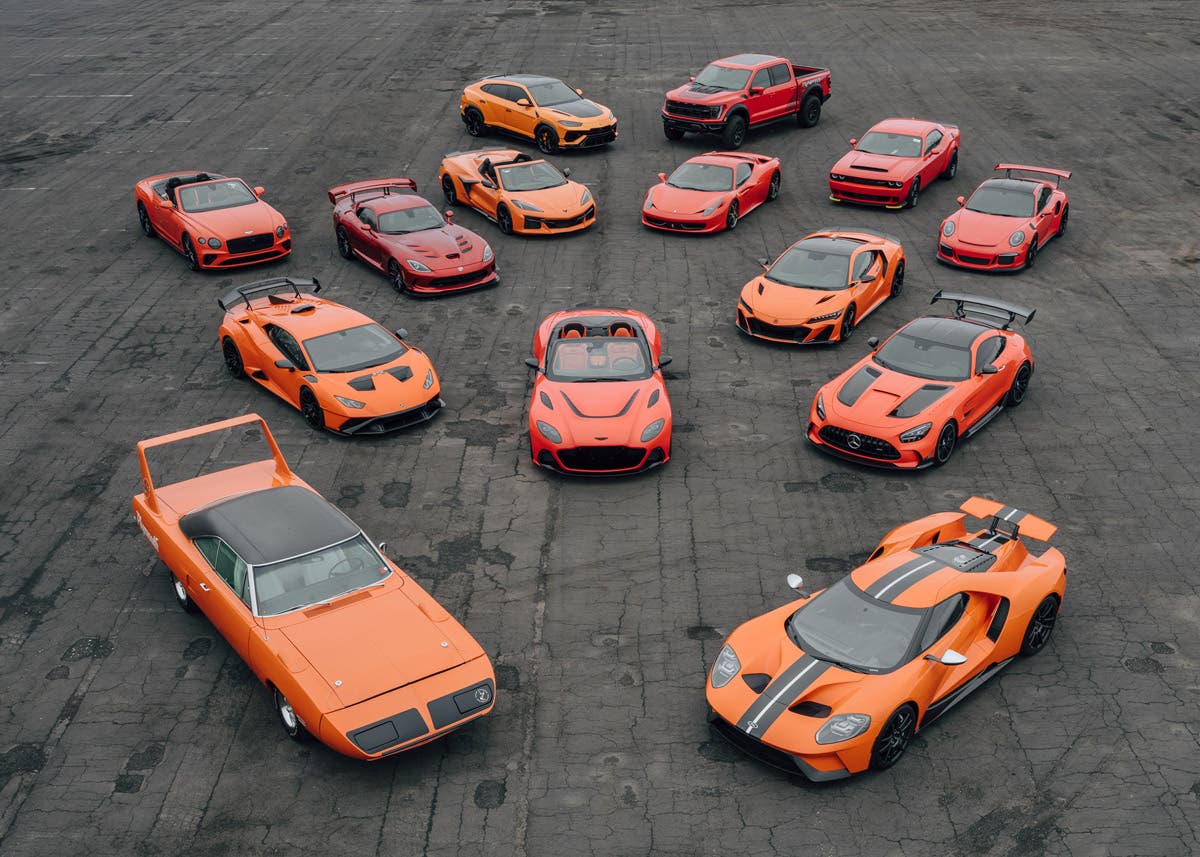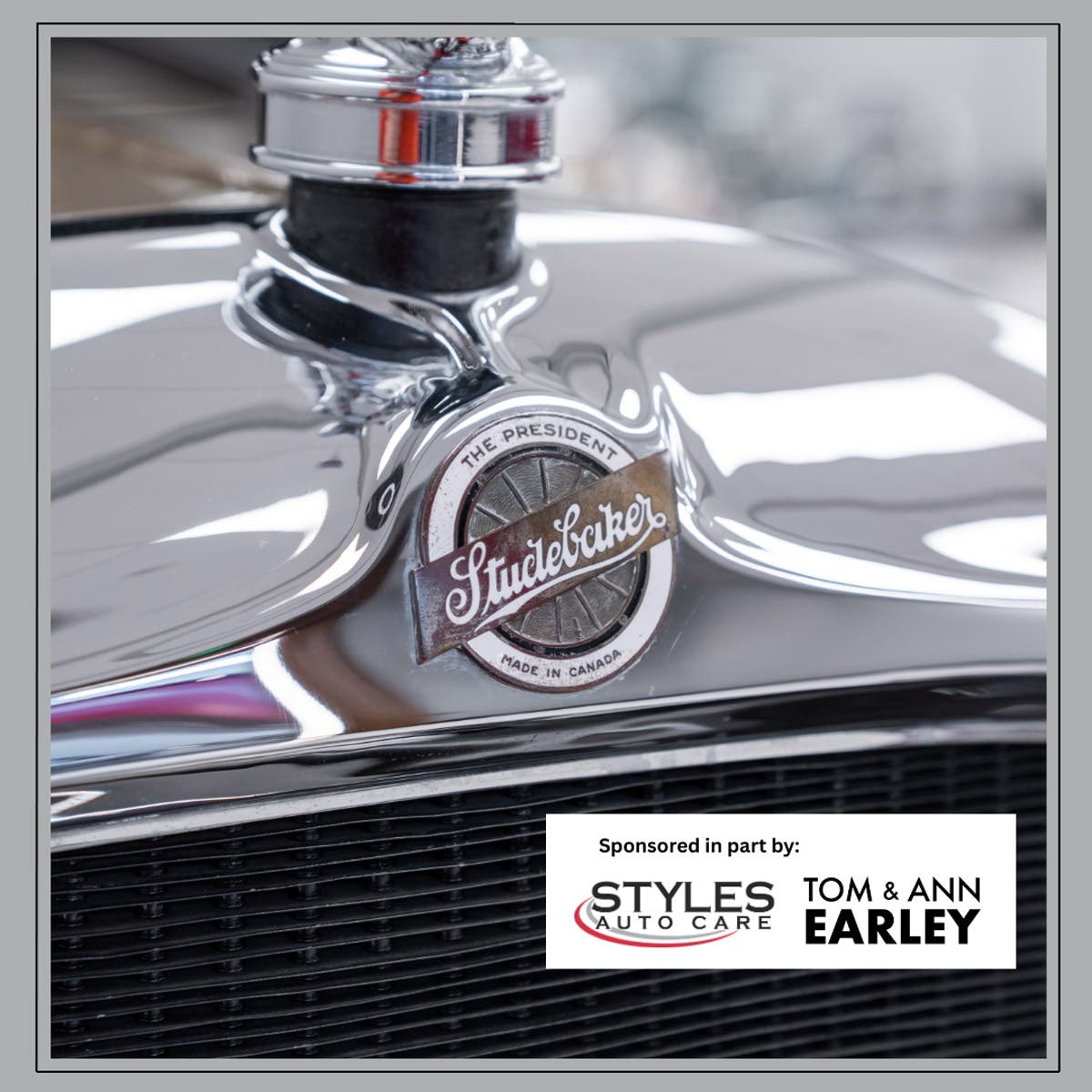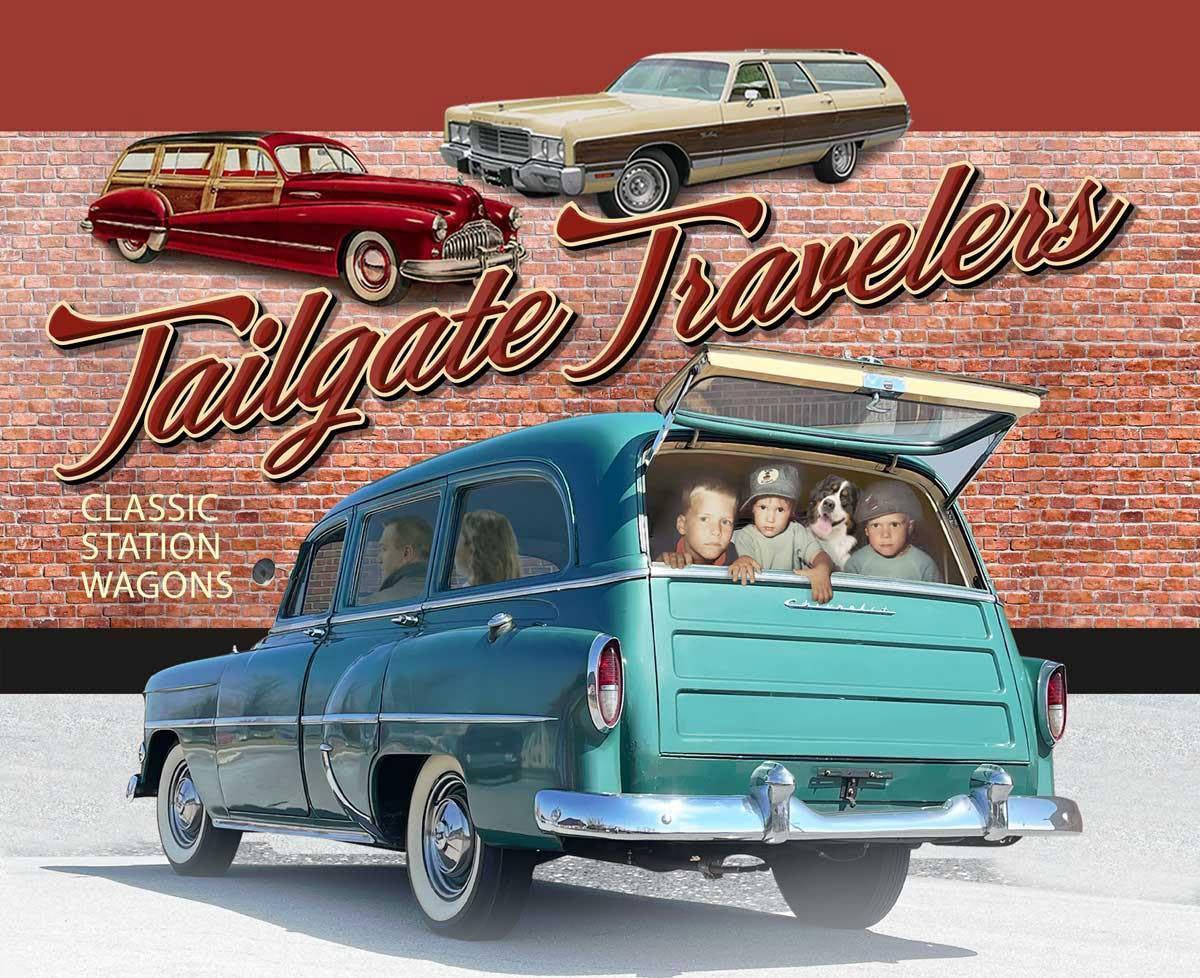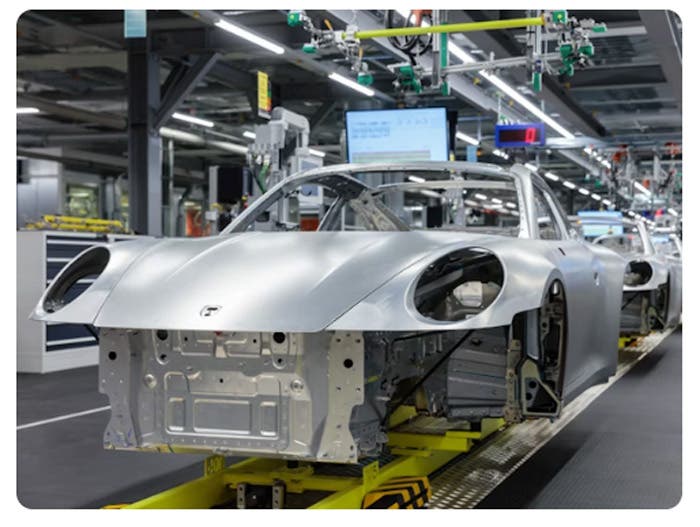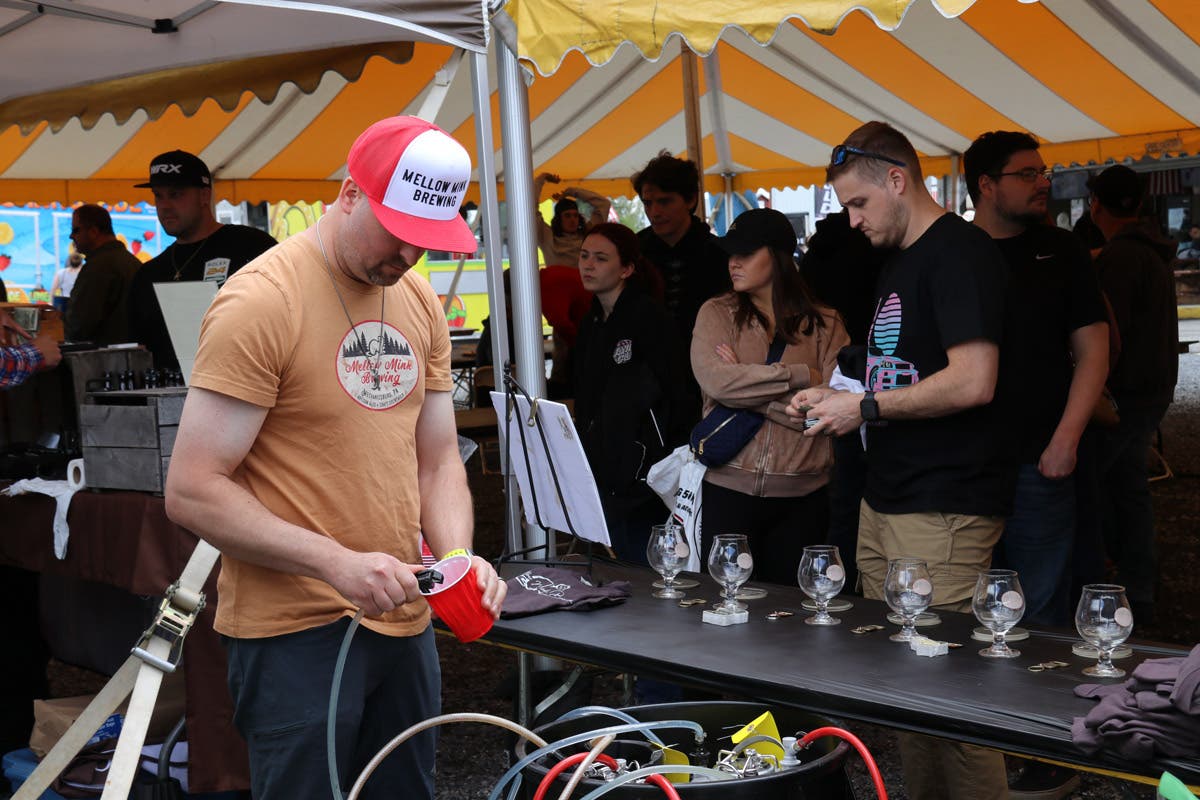10 Hot Chevys
Bow-Ties that are trending upward Story and Photos By John Gunnell When the collector car hobby began years ago, the most popular cars were Fords. You can find club rosters…
Bow-Ties that are trending upward
Story and Photos By John Gunnell
When the collector car hobby began years ago, the most popular cars were Fords. You can find club rosters from 40 or 50 years ago and very early Fords, Model Ts and Model As take up most of the listings.
The first collectable Chevy to get really popular was the handsome 1932 model, which was styled as a baby Cadillac. From there, the spotlight moved to 1940-’41 Chevys, which a West Coast dealer sold to many hobbyists.
Of course, the Tri-Five Chevys caught on next and literally turned car collecting upside down in Chevy’s favor. Although Fords of the same years are beautiful cars, they never caught on like the 1955, 1956 and 1957 Chevys. Not only did these Chevys flood the fields at car shows, they also shot up to very high values and made people realize that somewhat common cars of the ’50s could fetch the same prices as some 1930s Classics and rare foreign exotics.
Today, the Tri-Fives have had their run. If you bought one years ago, you enjoyed the increase in popularity and price. If you buy one today, you’ll probably pay through the nose. Even a stripped down, cut-up two-door body that’s likely to wind up as a straight-axle drag car can bring $5,000 in today’s marketplace. A well-restored ’57 ragtop can easily pull down a six-figure bid at a classic car auction.
Other Chevrolets, such as the fancier 1958 models, the 1961-’62 “Bubbletops” and the 1963-’64 Impalas, have followed the Tri-Fives into the high-priced bracket. These so-called “late-great Chevys” do hold their values. You can still have fun with these models, but the days are gone where you can buy them low and sell them high and wind up with a tidy profit for your car knowledge.
So, where does that leave the “average Joe” collector of 2019 who has a passion for Bow-Tie buggies and a budget? The answer to that question is that there are still market sleepers around that you can buy while they’re napping and turn a profit on when the market wakes up to their features and benefits. Here’s a list of 10 Chevy products that are getting collectable today:
1: CORVAIR - The Corvair has always been a cult car with a loyal following, even if its favor seems to have faded a bit. As one of the first compacts from the “Big Three,” the Corvair is historical and as a rear-engined air-cooled car, it’s definitely unique. Keep in mind that the Corvair was on track to be the youthful enthusiasts’ car before the Mustang came along and took over that niche. Like the Ford pony car, the Corvair came in coupe and convertible models, plus a station wagon that’s a low-production (read: rare) model. Some Corvair prices have dropped to the $5000-7000 range, but that means they’re “on sale” and a great buy for budget-conscious collectors. Plus, quirky cars seem to be “in” these days.
2: 1965-1966 FULL-SIZE CHEVY - The ’65 Chevy came out the year the author got his driver’s license and it was his dream machine back then. With timeless styling, a wide choice of engines and lots of muscle car goodies, Chevys of these years brought back fastback roof lines and Caddy-like grille designs. Collectable models include the Impala SS, the Caprice (an option in 1965 and a model in 1966) and practically any convertible, two-door and station wagon. In today’s market, prices are really starting to climb on just about all 1965-’66 Chevys.
3: VEGA - John Z. Delorean was the head of Chevrolet in 1971 and the Vega was a completely new sub-compact designed to get the company through the gas-crunch years. It had sporty looks and a 149-cid, 90-hp four-cylinder engine. GT versions were a $350 option package. The Cosworth modified editions of 1975 and 1976 produced 270 hp and bring steep collector prices today. Other Vegas sell for a lot less, but are hard to find because the cars weren’t very durable. That is exactly what makes them interesting today. Don’t expect to get rich investing in $5,000 Vegas, but you can buy one, have fun with it and perhaps sell it later for a small profit.
4: MONZA 2+2 - The subcompact 1975-’81 Monza was based on the Vega and shared its wheelbase, width and 140-cid engine. The Monza 2+2 was supposed to get a GM-Wankel engine, but due to mediocre fuel-economy and emissions issues, the Wankel was dropped from plans and an optional 5.0-liter V-8 was offered. With sporty looks and its sizeable V-8, the hot little Monza 2+2 is sure to catch on with collectors. Prices are currently around $5,000 and up, but watch for them to scoot up on V-8-powered cars.
5: GENERATION IV EL CAMINO - The El Camino coupe-pickup was redesigned in 1973. It was again built on the Chevelle platform, specifically the station wagon chassis. 1973-’77 marked the largest El Camino generation. The base model and the optional SS version shared interior and exterior appointments with Malibus in 1973 and starting in 1974, the El Camino Classics shared the Malibu Classic appointments. The SS model included a black grille, SS badging, bodyside striping, bright roof rail moldings, dual sport mirrors, special front and rear stabilizer bars, rally wheels, 70-series white-letter tires, instrumentation and SS interior emblems. The SS was available with a 350- or 454-cid V8 and four-speed or Turbo Hydra-Matic transmissions. As truck popularity grows, watch for vehicles that cross over into the truck realm to have added appeal. Values are currently about $10,000 for small-block “Elkys.”
6: GEN III MONTE CARLO - Like other General Motors intermediates, the Monte Carlo was down-sized for 1978. This cut 15 inches and 750 lbs. In 1978, a 231-cid V-6 and 305-cid V-8 were offered. The ’79 model had a new grille and other minor changes. A new 267-cid V-8 was an option and a four-barrel version of the 305 with 180 hp was added. The mildly updated 1980 model had quad headlights and several new power options including a 229-cid V-6 and a turbo 231-cid V-6 with 170 hp. Available only three years with this styling, these cars are a good bet for the future, especially since the values of their 1981-’88 successors continue to rise.
7: GEN IV MONTE CARLO SS - The Gen IV GM G-body body was smoother in profile than the previous models, and they have remained popular since they were built. Models to look for include the Turbo. Chevy built 3,027 Turbo Monte Carlos in 1981, then dropped it in 1982. The 1983 Monte Carlo with the Z65 Super Sport Package is very collectible. A rarity is an ’84 base model with a 350-cid diesel; only 168 were made. T-tops add to Monte Carlo collectability. Montes returned in ’85 when the 200-4R Hydra-Matic with a sport rear axle ratio arrived for the SS, along with a 4.3-liter V-6 for non-SS models. SS models received a high-output 5.0-liter V-8, which adds to their desirability. The 1986 Aero Coupe was a low-production model created to legalize a back-window treatment for NASCAR. Only 200 of those were sold and they are getting very collectible. In 1987, Chevrolet eliminated the Sport Coupe version of the Monte Carlo, leaving the LS, SS and Aerocoupe (6,052 made). The 1988 models were built in December 1987. Prices range from $8,000-$12000 for mint non-SS models and around $20,000 for very low-mileage SS models.
8: 1976 & 1977 CORVETTE - Almost everyone has dreamed of owning a Corvette, but fitting one into a budget can be a problem. However, almost anyone can find a 1976 or 1977 Corvette that’s affordable. We’ve seen these cars trade hands for $2,500 or less. A big reason is the danger of getting one with a rusty floor. In 1976, the fiberglass floor was replaced with steel panels to provide protection from the catalytic converter’s high heat. If you find a rust-free car outside the collector’s market, you might get a good buy due to the bad reputation for rusting. Also, keep in mind that if the car has rust, it can be fixed (as long as the frame is solid and straight). Cars of these two years also look a little plain, but they can be dressed up and provide lots of Corvette fun for prices far lower than what other ’Vettes bring.
8: GEN III ‘BOX CAR’ CAPRICES - These cars were built from 1977 to 1990. The 1977-’79 came out of Chevy’s $600 million Project ’77 modernization program. Though large by today’s standards, Caprices were drastically downsized from previous big Chevys, although interior roominess was increased. Two-door models from 1977-’79 featured a three-piece rear window that created a semi-fastback look. Landau coupes featured a half-vinyl roof. There were sedans and wagons, too. The 1980-1990 models had all-new, subtly smoothed sheet metal that enhanced without drastically altering the “Caprice look.” Coupes were still available from 1980-’82 and 1984-’87, but starting to get rare. In 1986, the front fascia was facelifted and the grille became slimmer while the tail lamp panel became more modern. The Brougham LS model released in 1986 has increased collectability. The 1990 models have unpopular door-mounted seat belts. Also popular with collectors are the 9C1 police editions of the “box car” Caprice. They often tested as America’s No. 1 cop car. Prices top out around $10,000 for mint examples.
9: HOLDEN-BASED POLICE CAPRICE - The Caprice name was revived after 15 years for an Americanized cop car from 2011-2017. This Caprice was a full-size car with a traditional rear-wheel-drive layout. It was built by Holden, the long-time General Motors subsidiary in Australia, where this model was known as the Holden WM/WN Caprice. A Holden-Statesman/Caprice was also marketed in countries such as the United Arab Emirates and Saudi Arab during this time. It was sold in both civilian and police trim versions. These cars are already collectible.
10: 1973-1987 C/K PICKUPS - Third-generation Chevy C/K trucks are known as “Box-body” or “Square-body” trucks among collectors. GM’s official description was “Rounded-Line” based on the rounded styling lines of the windshield corners, cab roof corners and “limousine style” doors. The 1967-’72 Gen II C/K trucks were the first to gain a really strong following, but as supply of those dwindle, the Gen IIIs are getting a second look from collectors and zooming in both demand and value. These trucks were prone to rust, so check carefully for signs of “tin worm” infestation. Naturally, the higher trim levels are most desirable, as are big engines, lots of factory accessories and sporty shortbed and stepside models ($15,000+), but don’t overlook the appeal of a really clean base model ($8,000-plus) that’s never seen corrosion.



